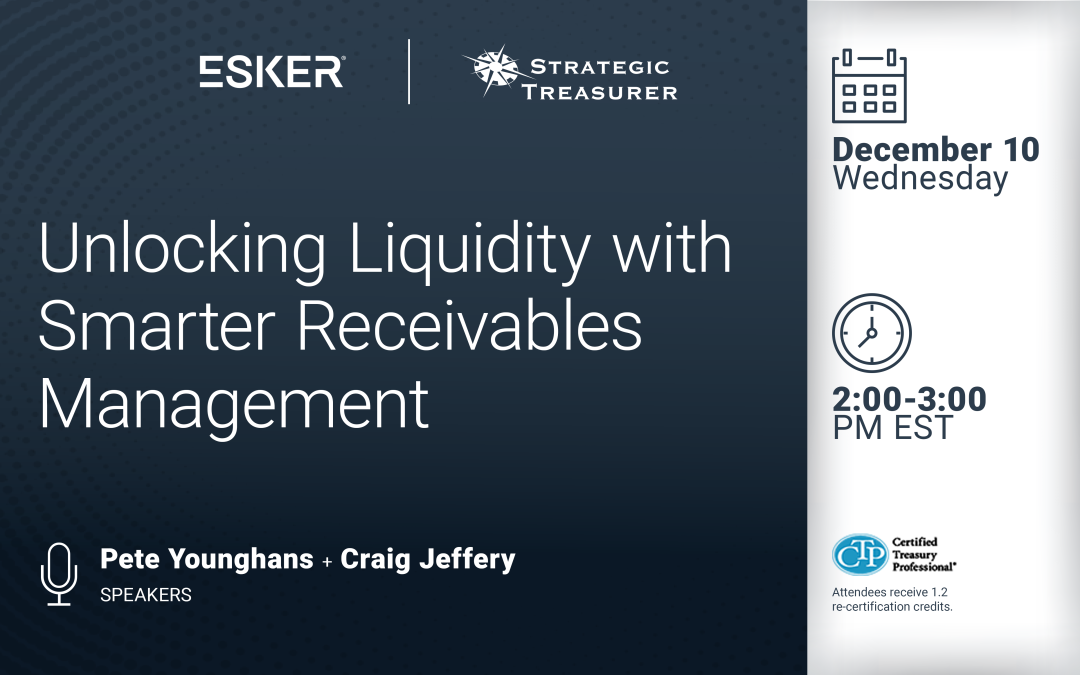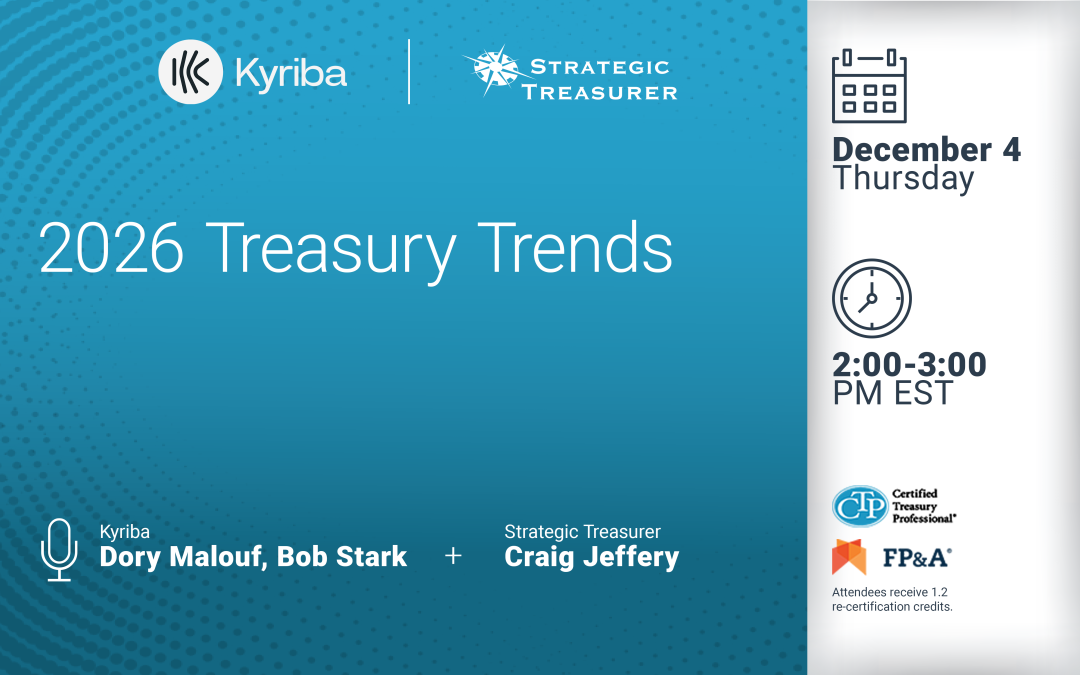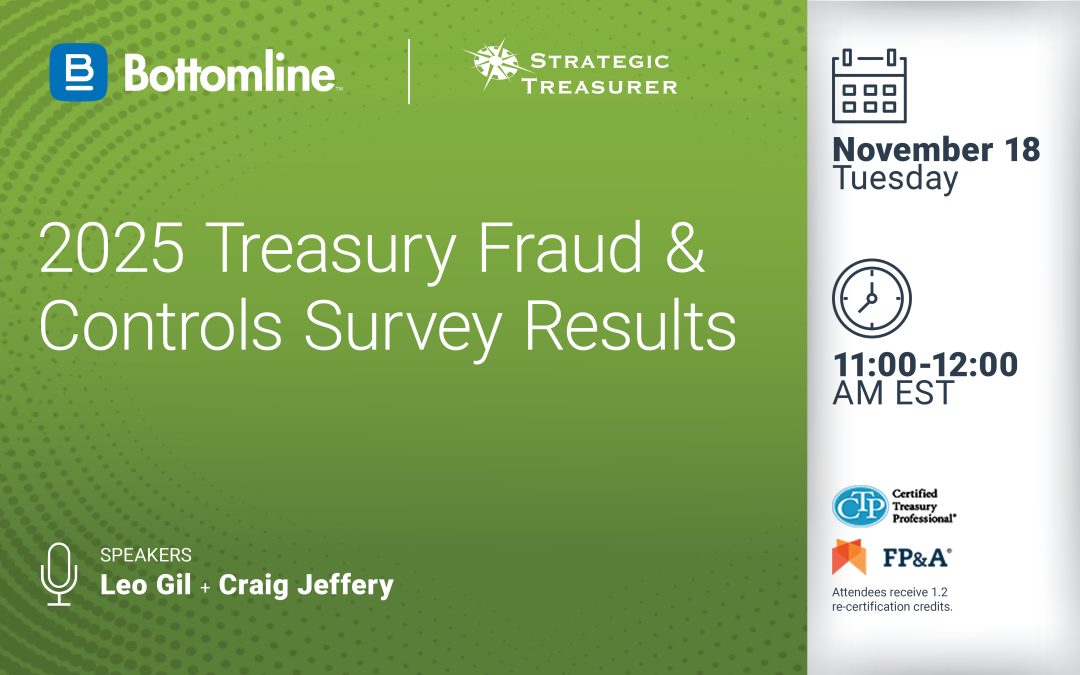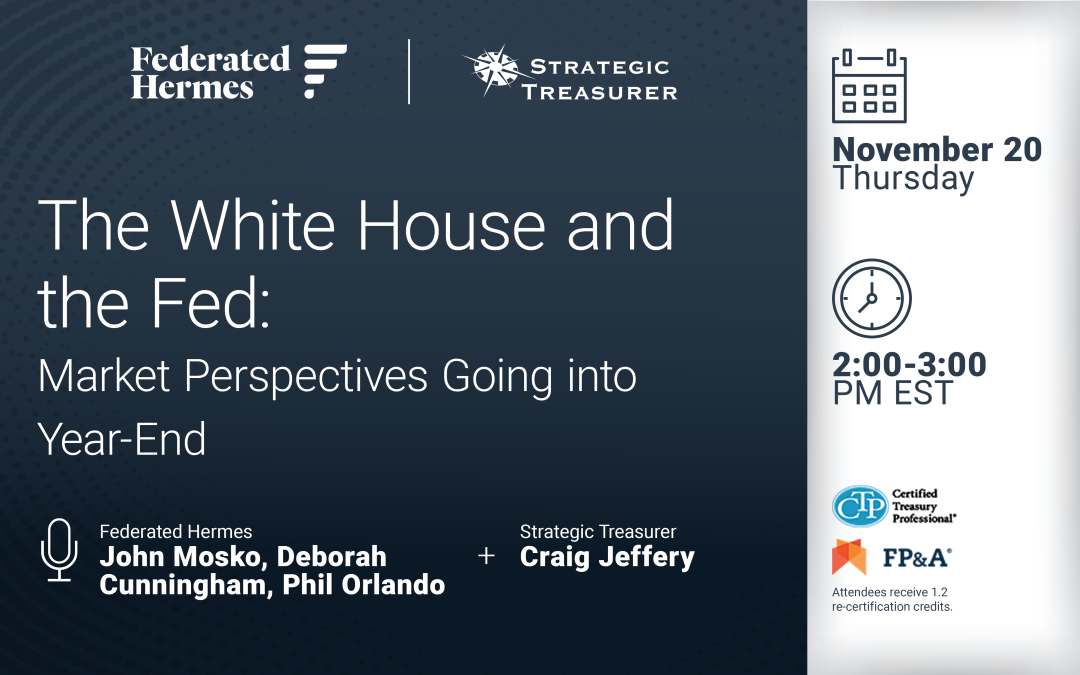
by Brian Weeks | Nov 10, 2025 | Replays, Webinars
Efficient cash application and collections processes are essential to maintaining a strong liquidity position, yet manual processes often delay visibility and distort forecasts. This session will explore how automation and data-driven AR workflows can accelerate cash conversion, enhance forecasting accuracy, and improve real-time visibility into usable cash. Learn how integrating AR and treasury data enables real-time liquidity insights and supports a unified approach to working capital management.

by Brian Weeks | Nov 10, 2025 | Replays, Webinars
Fraud and the threat of financial losses continue to escalate. Losses are growing. Criminals are increasingly automated and sophisticated. Protecting payments requires a robust approach across five major domains: structure, processes, services, technology, and people. This session will explore each of these topics. From training to leveraging fraud prevention tools, attendees will better understand how they can protect their payments and cash. The session is both contextual and practical for those wishing to act.

by Brian Weeks | Oct 27, 2025 | Replays, Webinars
As organizations look ahead to 2026, treasurers and CFOs must balance technological advancement with an unpredictable operating environment. This session will explore key treasury trends influencing liquidity, payments, and financial strategy, including the expanding role of AI, the impact of new payment technologies, and the rise of digital assets. Panelists will discuss how treasurers can navigate economic and geopolitical uncertainty while developing future-ready teams equipped to manage risk, harness technology, and sustain confidence in an increasingly complex global environment.

by Brian Weeks | Oct 27, 2025 | Replays, Webinars
Fraud continues to challenge organizations as schemes evolve and criminals exploit new vulnerabilities. The 2025 Treasury Fraud & Controls Survey captured how companies are experiencing and responding to these threats, with insights into threat levels, security measures in use, and investment priorities. This session will review key takeaways from the research and highlight what treasury and finance leaders need to know about today’s fraud environment. Attendees will gain perspective on emerging risks, evolving control measures, and the steps their peers are taking to protect their organizations more effectively.

by Brian Weeks | Oct 27, 2025 | Replays, Webinars
As 2025 concludes, treasury and finance professionals face continued uncertainty surrounding monetary policy, market stability, and economic direction. This session will examine the evolving relationship between fiscal priorities and the Federal Reserve, including how leadership dynamics and policy decisions may influence interest rates, liquidity, and corporate access to capital. Panelists will also discuss some practical implications of these developments for treasury strategy and risk management. Attendees will gain perspective on key factors shaping the economic outlook heading into 2026 and what treasury teams should be aware of to remain agile amid shifting policy and market conditions.

by Brian Weeks | Oct 10, 2025 | Replays, Webinars
Treasury leaders are at the heart of every organization’s banking relationship, and now sweeping new rules for ACH “push payments” are putting the treasury front and center in the fight against fraud.
Effective June 2026, every company and public sector organization must comply with these changes, designed to reduce fraud and improve fund recovery in cases of business email compromise and vendor impersonation scams. For treasury teams, the stakes are high: these rules directly impact how your organization manages supplier onboarding, payment change requests, and ACH payments.
Join PaymentWorks, Strategic Treasurer, and Nacha for an exclusive session tailored to treasury leaders. You’ll gain practical insights into what these changes mean for your team, your processes, and your banking relationships.






